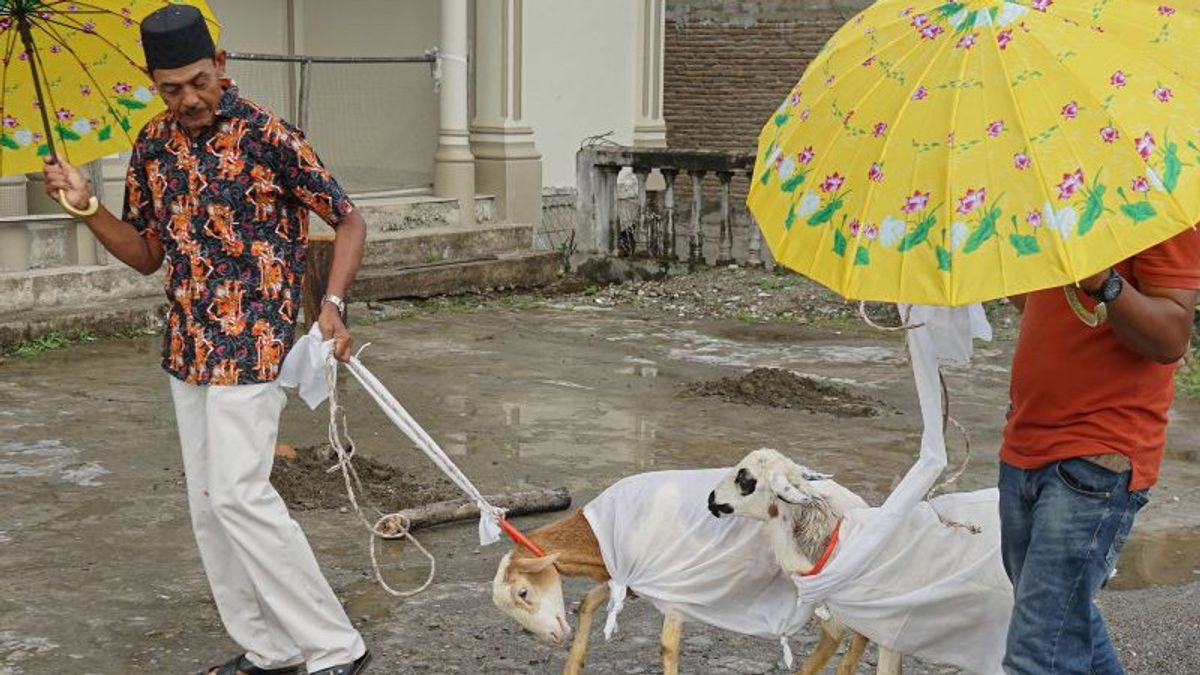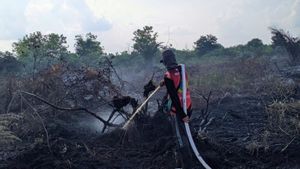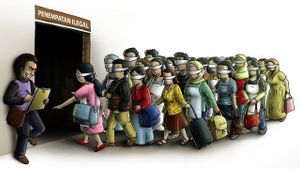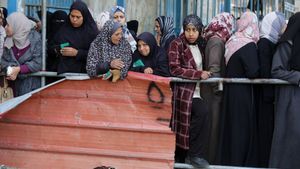JAKARTA - Eid al-Adha is synonymous with slaughtering sacrificial animals in the form of cows, sheep or goats. In various regions, the slaughter of sacrificial animals is also accompanied by their respective traditions which are full of values.
As is the case in Krueng Batee Village, Kuala Batee District, Southwest Aceh Regency, Aceh Province, the community enveloped and covered sacrificial animals with cloth when slaughtering.
And also enliven various toiletries to umbrellas to mosque officials, which are included in the pan.
"This has been hereditary from time to time by our parents, for those who can afford it, it is not a must," said Iman Meunasah, Krueng Batee Village, Tgk Salmi, quoted from Antara, Sunday.
In that area, cattle, sheep, and goats are shaded and covered in woven cloth as they go to the slaughtering place, namely meunasah or small mosques.
Prior to that, the sacrificial animal had also been bathed with soap until it was clean, and also the tradition of peusijuek at the owner's house.
The white cloth that covers the animal has four. Each side has been tied up by money which is the animal owner's alms for slaughtering officers.
Cattle owners also provide a variety of equipment filled in dishes, handed over along with sacrificial animals. Some of them include brushes, soaps, odols, mirrors, scissors, sarongs, mukena, clothes, umbrellas and several others.
Then, the dish was converted to the slaughtering officer, then the contents were distributed to the administrators in the mosque environment, when the slaughtering process was complete.
According to Tgk Salmi, not all people who sacrifice must cover animals with cloth or provide other equipment in dishes. This is only a hereditary tradition, which is done in accordance with the sincerity of animal owners, if they have the ability.
There are also those who only give cakes, or even don't fill them at all, nor do they matter. Because (tradition) is not something that is sunnah is done, let alone must be definitely not, so it is not recommended in religion," he said.
According to Tgk Salmi, this habit is not ordered in Islamic law. Likewise in Aceh's customs or culture, it's just a habit of society from ancient times, so it has been preserved until now.
The goal, according to him, is that the community wants the sacrificial animals that are slaughtered to be clean, so they treat them like taking care of family members who are intended for the sacrifice, whether alive or dead.
"If you sacrifice but don't provide this, it doesn't matter either, there is no fine or punishment. So if you say this is a gampong custom, if it is not done it will be fined gampong, but this is not customary, it's just a habit," he said.
Meanwhile, Krueng Batee community leader Tgk Muktar Ali said that this tradition was not recommended or explained in the Al Quran or hadith of the Prophet Muhammad SAW.
This tradition is only based on the habits of the people of ancient times, and it is not a problem if it is preserved by the community as local wisdom.
"So why choose the white cloth, our parents used to liken the sacrificial animal to the dead, so it needs to be wrapped in a cloth, covered with fire when slaughtering is also a protector," he said.
اقرأ أيضا:
According to him, people from ancient times wanted the slaughtered sacrificial animals to be clean, so they were treated properly. Then, equipped with a number of equipment until finally converted to the mosque.
However, it is not an obligation for the public to do this, it's just a tradition.
"In Allah's law, it is not conveyed that bathing (the sacrificial animal) must be with soap, but it is quite clean. Just because our society really loves it, it is bathed with soap, brushed as well, as long as the goat's hair does not fall out," he said.
The English, Chinese, Japanese, Arabic, and French versions are automatically generated by the AI. So there may still be inaccuracies in translating, please always see Indonesian as our main language. (system supported by DigitalSiber.id)


















